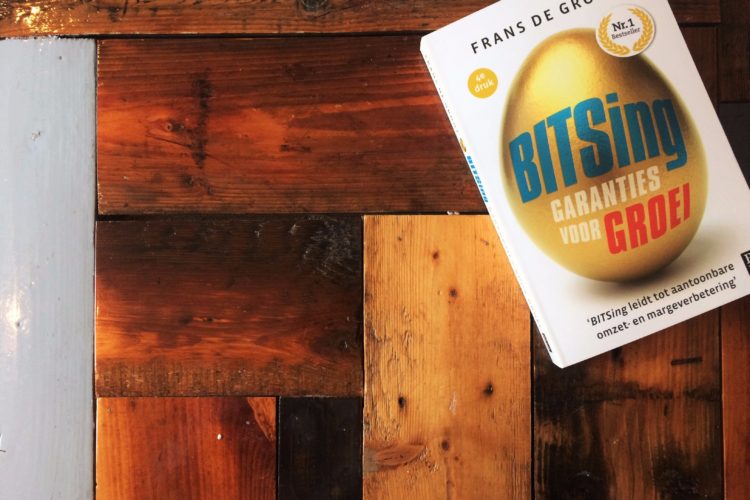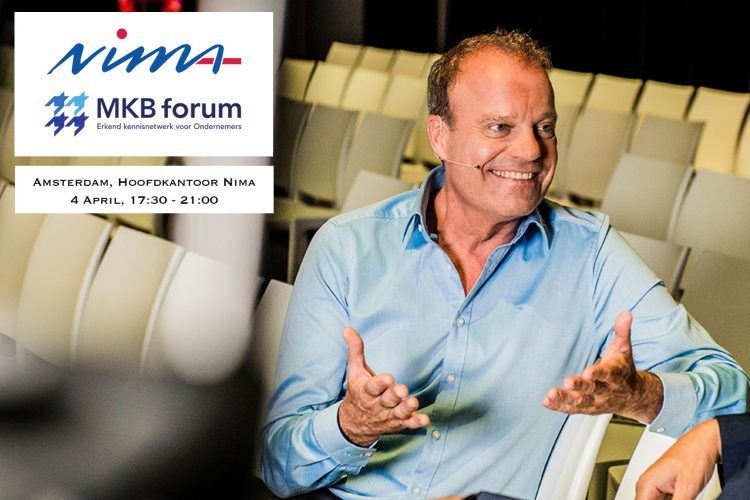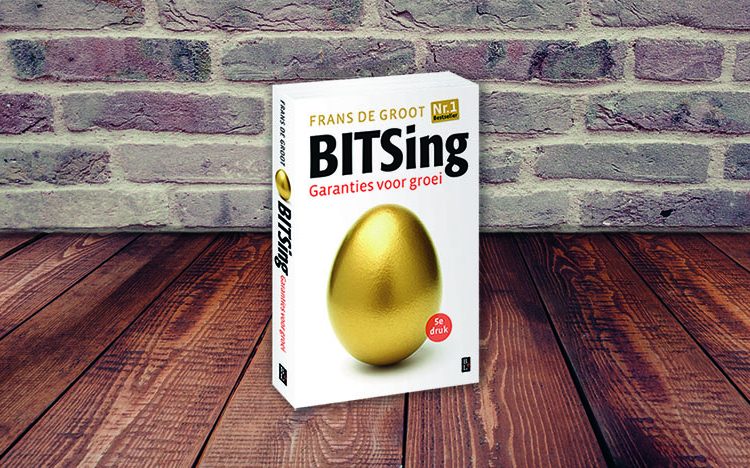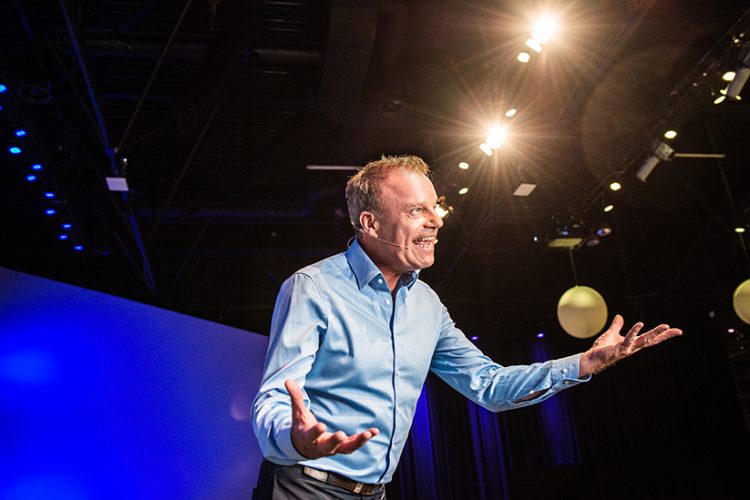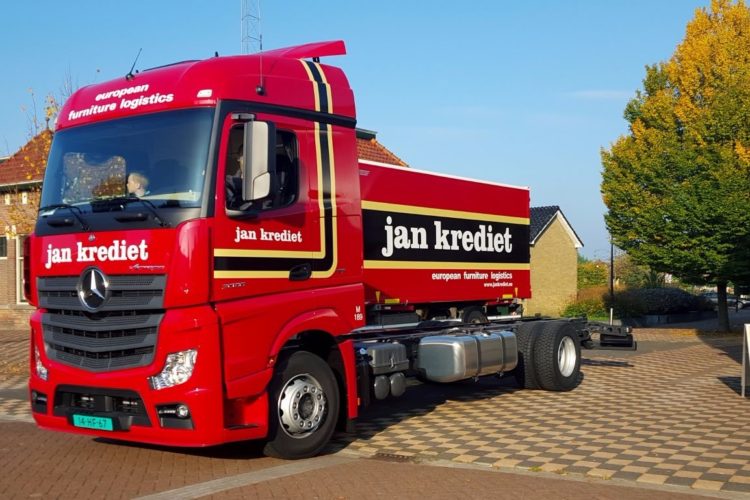MIEP design – een droom wordt werkelijkheid
- Er is geen lef nodig om een eigen onderneming te beginnen, slechts de wil
- Hoe de Bitsing-methode je de zekerheid geeft dat het gaat lukken
Iedere ondernemer is ooit een keer voor zichzelf begonnen. Ik ook. Dat vond ik eng, dat heb je in de inleiding kunnen lezen. Je moet toch een inkomen hebben, hoe ga ik dat dan verdienen en wanneer dan?
Hoe groot is het percentage mensen dat als zelfstandig ondernemer aan de slag wil, maar het niet aandurft? Groot. Ik vond het daarom belangrijk om een motiverend en inspirerend verhaal in dit boek te hebben voor iedereen die droomt van een eigen onderneming of die net gestart is.
Het volgende verhaal gaat over Githa Minis, die het aandurfde om in een ogenschijnlijk kansloze situatie haar eigen bedrijf te beginnen, niet gedwongen, maar omdat het haar droom was. ‘Dankzij de Bitsing-methode’, zegt ze. We gaan het lezen, met haar eigen verhaal.
De eerste aanraking met Bitsing
Als afgestudeerde interieurarchitect lukte het door de economische crisis niet om een baan te vinden. Ik heb op z’n minst vijftig sollicitatiepogingen gedaan om bij een groot designbureau aan de slag te komen. ‘Onvoldoende ervaring.’ Ja, veel sollicitanten, weinig banen, dan kom je zonder ervaring nergens aan bod. Ik was gedwongen om werk te accepteren in de horeca. Toch wilde ik mijn droom en jarenlange studies niet opgeven.
Tijdens die baan leerde ik Frans kennen. Hij vertelde mij dat als ik een droom had dat ik die moest najagen, dat als ik als interieurarchitect voor mijzelf wilde beginnen dat ik dat gewoon moest doen. Zelf had ik altijd al die droom, maar ik wilde eerst ervaring op doen bij andere bedrijven in de branche. Frans overtuigde mij dat als ik de regels van bitsing zou volgen dat het mij dan gegarandeerd zou lukken.
Ik ben de uitdaging aangegaan. Niet omdat ik de gok durfde wagen, maar omdat ik na een kennismaking met de Bitsing-methodologie inzag dat het me zou gaan lukken, zorgeloos. Ik heb mijn baan in de horeca opgezegd en het interieurontwerpbureau MIEP design opgericht. Dag en soms zelfs nacht ben ik vol enthousiasme en vuur met mijn eigen onderneming bezig. Een geweldig gevoel is dat. Dankzij Frans en Bitsing kan ik mij bezig houden met mijn grootste passie en ben ik mijn droom aan het verwezenlijken.
MIEP design
De naam komt niet zomaar uit de lucht vallen. Ik heb van de Bitsing-methode geleerd dat je niet-kopieerbaar moet zijn en dat die niet-kopieerbaarheid tot uiting diende te komen in alles wat ik doe, dus dacht ik meteen ‘ook in de naam’ van mijn onderneming.
Een echte ‘eye-opener’ van Bitsing was dat de grote professionele designbureaus helemaal niet mijn concurrenten waren, dat ik daar ver weg van moest blijven. En dan te bedenken dat ik eerst nog dacht dat ik daar een baan moest zoeken.
Ik had namelijk geleerd over de ‘geldconcurrent’– waar geeft mijn doelgroep haar geld aan uit als het niet aan een interieurdesignbureau wordt besteed? Het antwoord was simpel: ze geven hun geld uit aan ‘zelf doen’, aan het zelf inrichten van hun woning. Mijn concurrent bleek niet het professionele designbureau te zijn, maar ‘de klant’ zelf. Dan moet ik mijn doelgroep overtuigen dat hun geld beter besteed is aan mij, dan aan het ‘zelf doen’. En dat gaat lukken als ze weten waarin in niet-te-kopiëren ben.
Ik ben op zoek gegaan naar wat mij nu niet-kopieerbaar maakt ten opzichte van dat ‘zelf doen’. Ik heb het gevonden aan de hand van de Bitsing-methode: Hollandse nuchterheid. Ik ben een geboren West-Fries, opgegroeid in een oer-Hollands gezin. Doe maar gewoon… je weet het wel. Ik vind op de een of andere manier dat alles Nederlands is voor mij. Dat ben ik gewoon.
Weet je wat het betekent als je in staat bent om de wetten van interieurdesign te combineren met Hollandse nuchterheid? Dan krijg je een interieur dat geweldig mooi is – om trots op te zijn – met respect voor het praktische leefgenot van degenen die erin gaan wonen. Geen rare fratsen, gewoon functioneel. Iedereen vindt het belangrijk om een mooi interieur te hebben, maar wat heb je eraan als er kinderen in rondlopen en het bevuilen? Heel vaak wordt de nadruk op design gelegd en niet op functionaliteit.
Nee, een voortvloeisel van design (beleving) met Hollandse nuchterheid (praktisch gebruik): doelmatig interieurdesign, alsof de klant het zelf zou hebben gedaan, met beide benen op de grond. Een echte MIEP, heel Nederlands.
Ik had niet veel tijd nodig om deze naam te bedenken. Ik heb me namelijk laten leiden door de eisen die het BITSER-model stelt aan het creëren van bekendheid in een doelgroep – de eisen van de B-trede. Het is geen moeilijke naam, die toch verrast, de aandacht trekt, kort en krachtig is, die makkelijk blijft hangen en waarvan iedereen denkt dat die ‘m herkent.
Drie redenen om niet voor jezelf te beginnen
Als ik het weer eens met vrienden had over het starten van een eigen onderneming dan had ik genoeg munitie om te zeggen waarom ik er vooral niet aan moest beginnen: geen ervaring, onzekerheid en waar moet je beginnen, ik heb net m’n studie afgerond? Er zijn genoeg redenen om iets niet te doen, maar door Bitsing ben ik daar anders naar gaan kijken. Ik kreeg de reden in mijn schoot geworpen waarom ik wel mijn eigen onderneming zou moeten beginnen.
De enige reden om vandaag nog te beginnen
Toen Frans mij over Bitsing begon te vertellen kwam hij met allemaal feiten waar je niet omheen kan, die aantoonden dat je het moet doen en dat niets je in de weg staat waarom je het niet zou kunnen. Het waren de feiten die mij houvast boden, die mij dwongen tot niets anders dan te geloven dat ik het zou kunnen.
Ik heb mijn eigen Bitsing-plan gemaakt, ben eerst wat minder gaan werken bij het horecabedrijf, maar naarmate ik steeds meer onderdelen van mijn plan ten uitvoer bracht, werd het allemaal des te magischer. Het was heel raar, maar het was alsof een stem mij telkens influisterde: ‘Je hebt hier echt iets in handen, het kan niet misgaan, je moet alles geven.’ Het was natuurlijk mijn gevoel, maar dat kwam door de enorme positieve energie die er om mij heen ontstond. Er gebeurde van alles. Na twee maanden heb ik ontslag genomen en ben ik fulltime voor mijn eigen MIEP design aan de slag gegaan.
Mijn Bitsing-plan vertelde dat ik de focus moest richten op woningen die te koop staan. Met mijn ‘Hollandse nuchterheid’ heb ik een concept op de markt gebracht dat vier partijen in de woningmarkt in een klap blij maakt: de koper van een woning, de verkoper van een woning, de makelaar van de woning en ikzelf. Veel woningen die te koop staan zijn vervallen – gedateerd – waardoor potentiële kopers dat als een struikelblok ervaren.
Met mijn concept maak ik een virtuele metamorfose van het interieur van een woning die te koop staat: een compleet nieuw ontwerp van de gehele woning en uitgebeeld door middel van een ‘artist impression’. De woning wordt op basis van dit virtuele interieur te koop aangeboden, inclusief offerte van de verbouwing.
Meteen ziet de potentiële koper wat de woning te bieden heeft, hoe fraai het kan zijn in combinatie met de praktische functionaliteiten en wat het kost om straks over een prachtige woning te beschikken. Het bleek de drempel om een woning te kopen te verlagen. Woningen waar voorheen niet naar om werd gekeken kregen plots veel kijkers, een aantal zijn verkocht, inclusief het design en de verbouwing van mijn virtuele metamorfose. Ik ben nu bezig om meerdere makelaar aan mijn concept te binden.
Bij alles wat ik deed heb ik de eisen van Bitsing ernaast gelegd. Ik wist daardoor gewoon dat het zou lukken. Het klopt als een bus, je kunt er niet omheen. Iedereen aan wie ik mijn verhaal vertel is ervan overtuigd. Bitsing geeft geloof en vertrouwen, eens te meer omdat je kan toetsen dat het gaat lukken. Het is een houvast. Je investeert er veel in qua tijd en geld en dat doe je niet zomaar. MIEP design staat als een huis. Mijn plan is om er een goed lopend bedrijf van te maken met personeel.
Frans vroeg mij om samen te vatten wat ik van Bitsing heb opgestoken. Dit is mijn lijst, mijn toetssteen:
- Geef nooit geld uit voordat je het verdiend hebt.
- Investeer alleen tijd en geld in de ‘potloden met scherpe punt’.
- Zorg dat er behoefte is aan het product dat je verkoopt.
- Richt je op de koper van je product, dus weet wie je doelgroep is en spreek hun aan.
- Je concurrent is waar men het geld aan uitgeeft als ze dat niet bij jou doen.
- Doe geen verkoopaanbod als de reden dat men niet koopt ergens anders ligt.
- Zet je eigen probleem niet om in een campagne.
- Maak jezelf eerst kenbaar met je naam en merk en ga daarna pas verkopen.
- Vind je niet-te-kopiëren-eigenschappen, zorg ervoor dat je niet-te-kopiëren bent.
- Gebruik je niet-kopieerbare eigenschap in je boodschappen.
- Zorg ervoor dat mensen zelf gaan concluderen wat ze moeten doen, zeg niet wat ze moeten doen maar geeft ze een voorzetje.
- Blijf bij de feiten.
- De mensen moeten je eerst willen, voordat ze je gaan kopen.
- Je traffic is erg belangrijk, deze heb je nodig om de sale te krijgen.
- Zorg voor een risicoloze traffic/contact.
- Denk goed na over je middelen en boodschappen om je doel te bereiken, komen ze bij de mensen aan?
- Het middel wat je inzet is niet bepalend voor succes, de boodschap wel!
- Blijf focussen op je doel en wijk er niet vanaf!
Ik wist in het begin niet hoe of wat, maar nu weet ik zeker dat alles klopt. Het is allemaal zo feitelijk dat je er niet omheen kan. Door alle punten die ik heb geleerd is wat ik aanpak bij voorbaat al een succes. Ik heb het gevoel dat ik niemand meer hoef te overtuigen, gezien de veelheid van reacties die ik krijg. Alles was ik doe slaat aan.
Bitsing inspireert mij, het overtuigt en tegelijkertijd geldt: als je je eraan vasthoudt, bereik je je doel. Als ik even niet meer weet hoe of wat, dan pak ik mijn aantekeningen erbij en weet ik weer wat ik moet doen. Het is een handboek voor ondernemen.
Ik geniet ervan. Ik doe erdoor waar ik negen jaar voor gestudeerd heb. Het mooiste is dat ik nu elke dag als de dag erop zit, het bedrijf heb zien groeien, dat is echt vet.
Mijn droom is uitgekomen. Ik hoop dat iedereen die ook een eigen onderneming wil starten door mijn verhaal een droom in vervulling ziet gaan.
Githa Minis
Interieurarchitect van MIEP design
